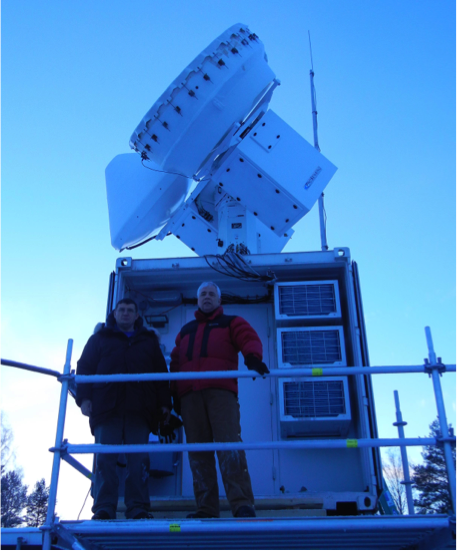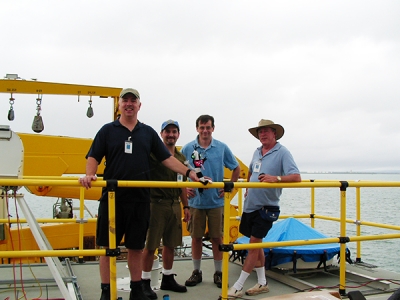Under the Radar—This Time in Retirement
Published: 5 November 2014

Throughout his career, Widener served in many ARM roles, including key positions like ARM Chief Engineer and North Slope of Alaska Engineering Task Lead. He installed radars at ARM sites all over the world, balancing engineering expertise with a keen understanding of the science goals of the program.
Never one to shy away from a challenge, he served 16 weeks on the Arctic icebreaker ship, Des Grosseilliers, for the Surface Heat Budget of the Arctic Ocean campaign, and was responsible for the operation of ARM radars both in the United States and at international sites ranging from Africa to China to Papua New Guinea. He also designed and built the first ARM Mobile Facility—the first of its kind in ARM.
“In all of his contributions to ARM, including his work in the Arctic and especially in his development of ARM radar capabilities, Kevin has brought a critical engineering discipline that has led to extraordinary results,” said Jim Mather, ARM Technical Director. Mather has known Widener since they began working together in the early stages of ARM.
“There were real questions when we started in the 90s regarding whether it was possible to operate continuously a research-grade cloud radar in the field, but thanks in large part to Kevin’s leadership, these radars are now an integral part of the ARM Facility.”

Before joining PNNL in 1984, Widener received his bachelors from Washington State University and served in the U.S. Marine Corps for 4 years, followed by 6 years in the U.S. Naval Reserve as an Engineering Duty Officer. He currently volunteers for the Skamania County Search and Rescue in southwestern Washington state, which he now calls home.
Happy retirement, Kevin—you certainly deserve it!
The ARM Climate Research Facility is a DOE Office of Science user facility. The ARM Facility is operated by nine DOE national laboratories, including .
Keep up with the Atmospheric Observer
Updates on ARM news, events, and opportunities delivered to your inbox
ARM User Profile
ARM welcomes users from all institutions and nations. A free ARM user account is needed to access ARM data.


















